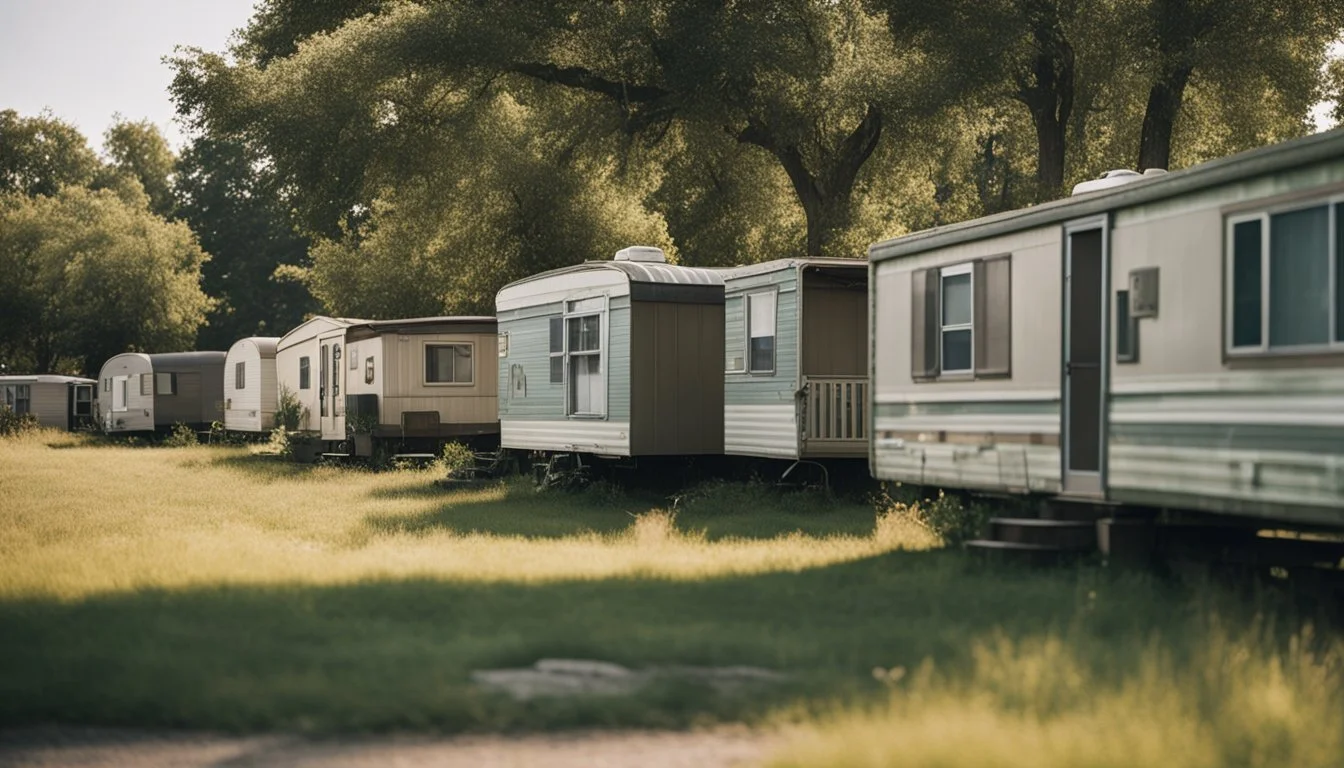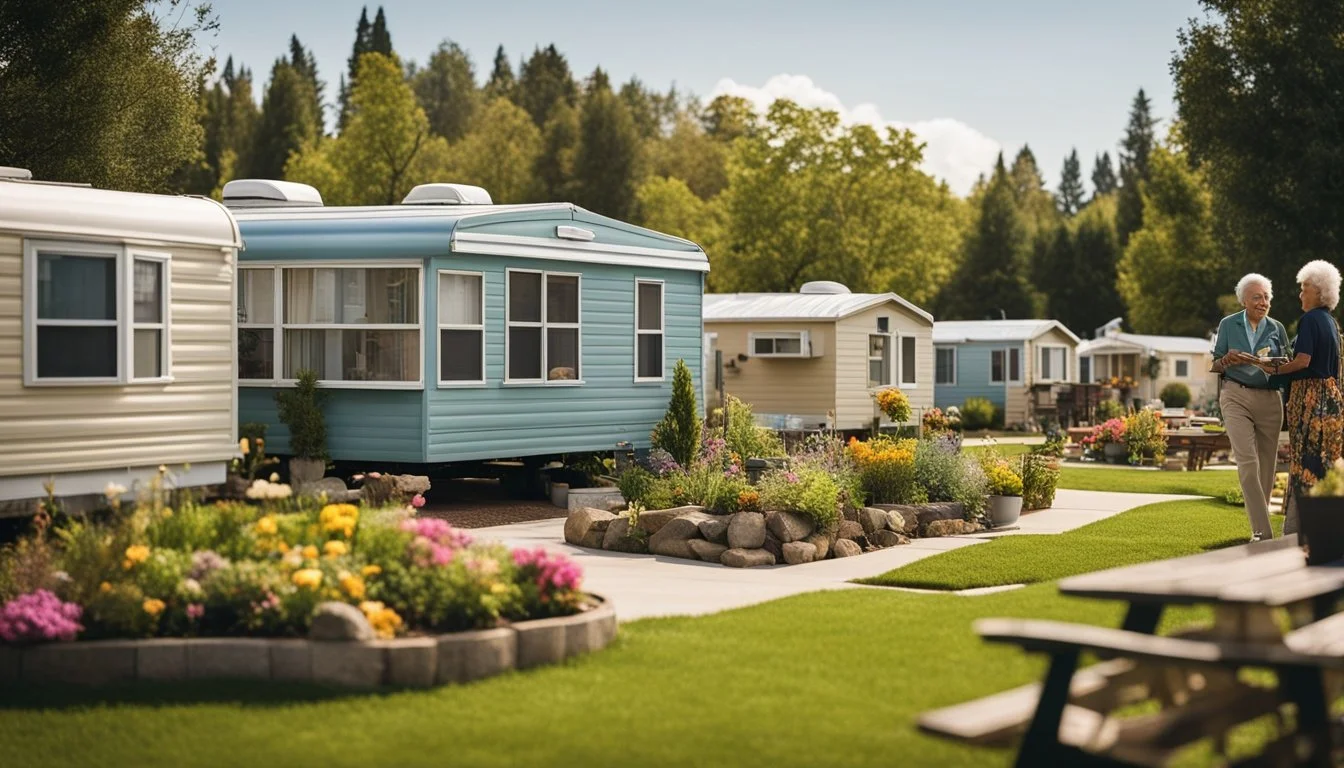The Representation of Aging in Mobile Home Communities in Film and Literature
A Comparative Analysis
Aging is a universal experience, and its portrayal in media often reflects societal perspectives and attitudes. In the realm of film and literature, mobile home communities serve as a striking backdrop for stories about aging, highlighting themes of independence, community, and sometimes isolation. These narratives resonate because they encompass both the struggles and the triumphs of older adults living in such settings.
The representation of aging in mobile home communities illustrates how film and literature use these settings to explore complex themes of identity, belonging, and resilience among older adults. This exploration often emphasizes the unique social dynamics of these communities, where a sense of belonging can offer solace and strength. Through characters and plots, storytellers offer insights into the lives of those navigating the challenges of aging within these tight-knit circles.
By examining depictions of mobile home communities, one gains a deeper understanding of how aging individuals forge connections and maintain dignity amidst changing circumstances. These portrayals not only reflect individual stories but also contribute to broader cultural narratives about what it means to grow older in contemporary culture.
Depictions of Aging in Mobile Home Communities
In films and literature, aging within mobile home communities often reflects unique societal contexts. These portrayals reveal both historical influences and persistent stereotypes. Breaking down these depictions offers insight into broader themes of ageism.
Historical Context of Aging in Media
The representation of aging in media has evolved significantly over the decades. Initially, mobile home communities were often depicted as havens for retirees, offering a simpler and affordable lifestyle. Literature and film reflected these communities as places where older adults could find camaraderie and a reprieve from the more demanding pace of traditional urban life.
In past decades, aging characters were frequently portrayed with limited depth, focusing only on their retirement and leisure. Media shifted focus as new narratives emerged, highlighting the complexities of aging, such as maintaining independence and fostering social connections. These portrayals underscore how social and economic factors shaped the narratives around aging in these unique spaces.
Stereotypes and Ageism
Despite evolving portrayals, stereotypes persist. Media often characterizes older individuals in mobile home communities as lonely or disconnected, reinforcing ageist narratives. Such depictions can perpetuate societal views that devalue the capacities and contributions of the elderly.
Films and literature sometimes depict these communities as places where older adults retreat from society. This portrayal can reinforce ageism by suggesting that aging leads to isolation or a lack of agency. These stereotypes obscure the vibrant, active lives many older adults lead in mobile home settings, participating in community events and forming meaningful relationships.
Challenging these stereotypes in future narratives can contribute to a more nuanced and respectful representation of aging.
Literary Gerontology and Mobile Home Settings
This section explores the intersection of aging, literary gerontology, and the unique domestic settings within mobile home communities. It examines how narratives of aging are influenced by these settings and the contributions that literature makes to understanding these experiences.
Gerontology Themes in Literature
Literature on gerontology often highlights themes such as identity, memory, and societal roles. These elements are critical in understanding the aging process within distinct communities like mobile home parks. In these narratives, the mobile home becomes a symbol of both stability and impermanence.
Authors often depict residents navigating changes in health and social status, emphasizing how the physical environment reflects their aging experiences. Mobile homes, as affordable and flexible housing options, provide a rich backdrop for exploring themes of community and isolation. Residential security, juxtaposed with the uncertainty of mobile living, underscores the complexities of aging in such settings.
Narratives of Aging in Domestic Spaces
The domestic space in mobile home settings presents unique challenges and opportunities for narratives of aging. Here, the focus often lies on daily life and personal interactions, shedding light on how these environments impact the aging process.
Mobile home communities can foster close-knit relationships, offering support networks essential for elderly residents. Yet, they also highlight the limitations of aging infrastructures, with residents often facing issues related to maintenance and safety. These narratives provide insight into how individuals adapt to their surroundings as they age, capturing both the resilience and vulnerabilities present in these communities.
Through detailed characterizations and vivid settings, literature serves as a window into the lived experiences of aging within mobile home environments.
Aging and Identity in Film Portrayals
The portrayal of aging in film often explores the intersection of identity, character development, and the unique settings that influence these narratives. Insights into how mobile home communities and character arcs shape these portrayals can deepen our appreciation and understanding of aging on screen.
Role of Mobile Home Communities in Film
Mobile home communities often serve as a backdrop for stories about aging, offering a unique setting that reflects economic and social realities faced by many older adults. Films highlight the sense of community and independence found in these settings. The depiction of mobile home communities frequently reinforces themes of resilience and adaptability, as characters navigate the complexities of growing older.
These settings allow for storytelling that examines life transitions and new beginnings, capturing the nuance and richness of an aging population. By showcasing mobile home communities, films emphasize both the challenges and the joys of aging, working against stereotypes by presenting multifaceted experiences. In doing so, they offer a more balanced examination of how aging, identity, and environment intersect.
Character Development and Age
Character development in film greatly influences audience perception of aging, as older characters navigate diverse experiences that define their identity. Storylines often reveal personal growth and self-discovery, highlighting the continued evolution of characters despite their age. These narratives challenge ageist stereotypes by featuring characters who possess agency and depth.
Films sometimes explore the challenges faced by older adults, such as loss or societal marginalization, but also celebrate wisdom, experience, and resilience. Well-rounded characters in these films become vehicles for empathy and understanding, creating connections between viewers and the aged, while promoting a nuanced portrayal of aging that respects individuality and diversity.
Comparative Analysis
The portrayal of aging within mobile home communities varies between film and literature. Visual and written narratives often highlight distinct aspects, influenced significantly by their respective mediums.
Contrasts Between Film and Literary Representation
In film, the representation of aging in mobile home communities often relies on visual storytelling and character-driven plots. Cinematic techniques such as close-ups and artistic framing capture emotional nuances and community dynamics in ways that emphasize personal stories.
In contrast, literature explores the inner thoughts and complex emotions of aging characters. Through detailed narrative descriptions and dialogues, authors delve into the themes of isolation, community ties, and personal reflections. This allows for a more intimate examination of characters' experiences in mobile home settings.
Text supports complex character development through monologues and internal dialogues, providing insight into characters' perspectives on aging and community living. While films elicit empathy through visuals, literature often achieves this through language and psychological depth.
Influence of Medium on Aging Narratives
Both mediums provide unique lenses through which readers and viewers perceive aging. In film, visual symbols and motifs can quickly convey themes of aging and community. The pace and collaborative nature of filmmaking contribute to a shared experience of aging in mobile home communities.
Literature allows readers to explore characters' internal worlds more thoroughly. The narrative pace can be slower, offering room for reflection and deeper understanding of aging processes within these communities. Literary portrayals focus on internal conflicts and community roles, enriching the reader's connection to the narrative.
Both mediums ultimately shape the viewer's or reader’s understanding of aging by employing their inherent strengths. Films capture snapshots of life, while literature provides an in-depth exploration of shared human experiences in aging. The choice of medium can thus crucially influence how aging is perceived and understood.
Cultural and Social Considerations
The portrayal of aging in mobile home communities in film and literature emphasizes distinct social constructs and cultural attitudes. These aspects highlight how society views and interacts with the elderly within these unique settings.
Social Constructs of Aging in Community
In mobile home communities, aging is often presented as a shared journey. Residents form tight-knit networks, supporting each other in everyday challenges. Films and literature frequently depict these settings as spaces where age-related stereotypes diminish, allowing older individuals to redefine traditional roles associated with aging.
Such communities often showcase resilience and camaraderie. Ageism, while present, becomes less pronounced as individuals find empowerment and mutual respect within their community. This supportive environment emphasizes the role of collective experiences in reshaping perceptions of aging, fostering a sense of belonging and purpose.
Cultural Attitudes Toward Elderly in Mobile Homes
Cultural attitudes within mobile home communities are critical in shaping the portrayal of older adults. These narratives in media often counter negative societal views, portraying elders as active participants in community life. The emphasis is on autonomy, with elderly characters depicted as maintaining control over their living arrangements.
Literature highlights cultural practices that celebrate the longevity and wisdom of older community members. Films often reflect diverse cultural backgrounds, illustrating a rich tapestry of traditions that prioritize family connections and respect for elders. These cultural reflections challenge broader stereotypes about aging, representing the mobile home setting as conducive to a dignified and engaged later life.
Conclusion
In exploring the representation of aging within mobile home communities in film and literature, several insights emerge. These narratives often offer unique perspectives on aging, often highlighting themes of community, independence, and identity.
Summation of Key Findings
Mobile home communities serve as a microcosm for examining aging, providing a setting where interactions and relationships among older adults are prominently featured. Films and literature often portray these spaces as supportive environments that foster a sense of belonging. Characters in these narratives frequently navigate the challenges and opportunities of aging, emphasizing resilience and adaptability.
By highlighting the social dynamics in such communities, these stories can prompt viewers and readers to reconsider preconceived notions about aging. This narrative approach aligns with contemporary gerontological interests in viewing aging through diverse and meaningful lenses.
Future Directions for Research
Future research could benefit from a closer examination of how these narratives impact societal attitudes toward aging and mobile home living. An interdisciplinary approach incorporating gerontology, sociology, and media studies could provide deeper insights into the evolving portrayal of aging in these unique settings. Researchers might also consider the cultural and economic factors that influence these depictions, potentially broadening the understanding of aging across different communities.
Additionally, exploring the global representations of similar living environments could reveal universal themes and distinct cultural perspectives, offering comprehensive insights into the human aging experience. These directions hold promise for enriching the discourse on aging and its representation in media and literature.






